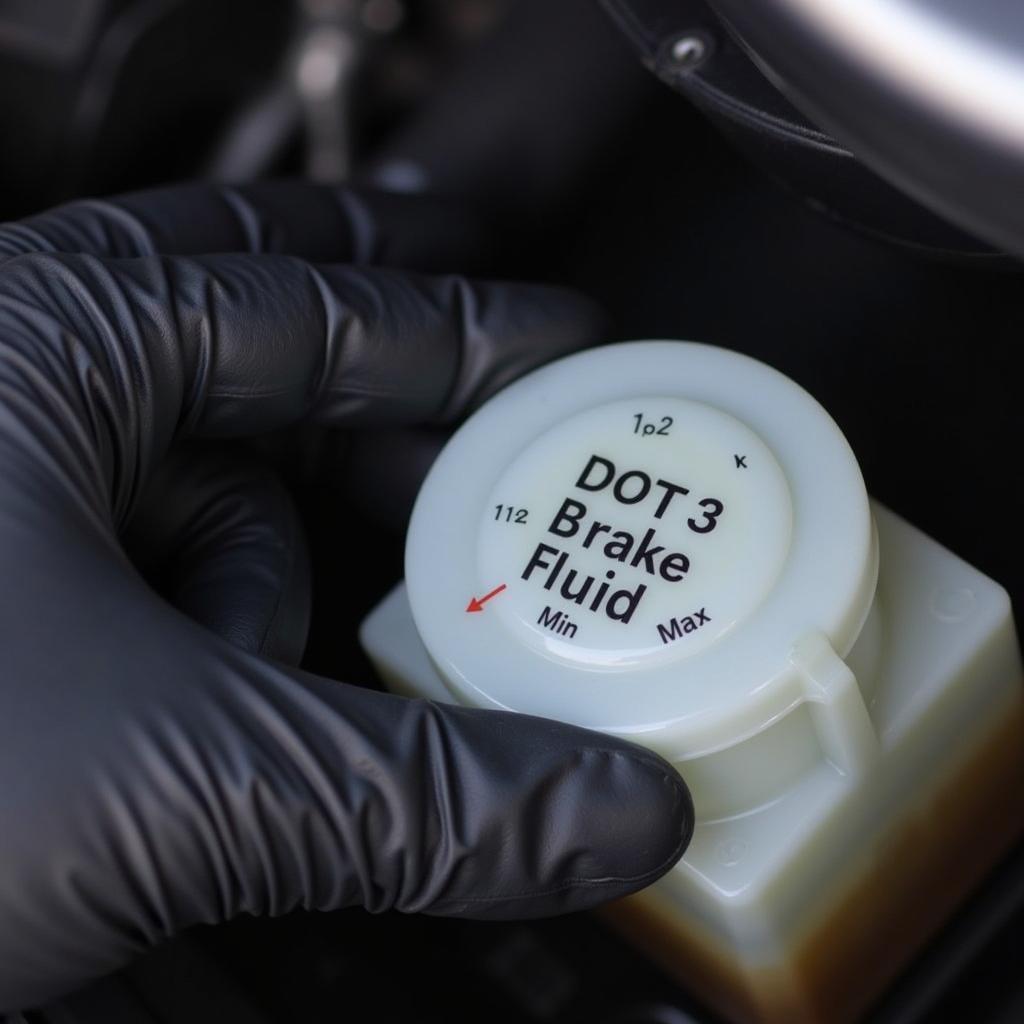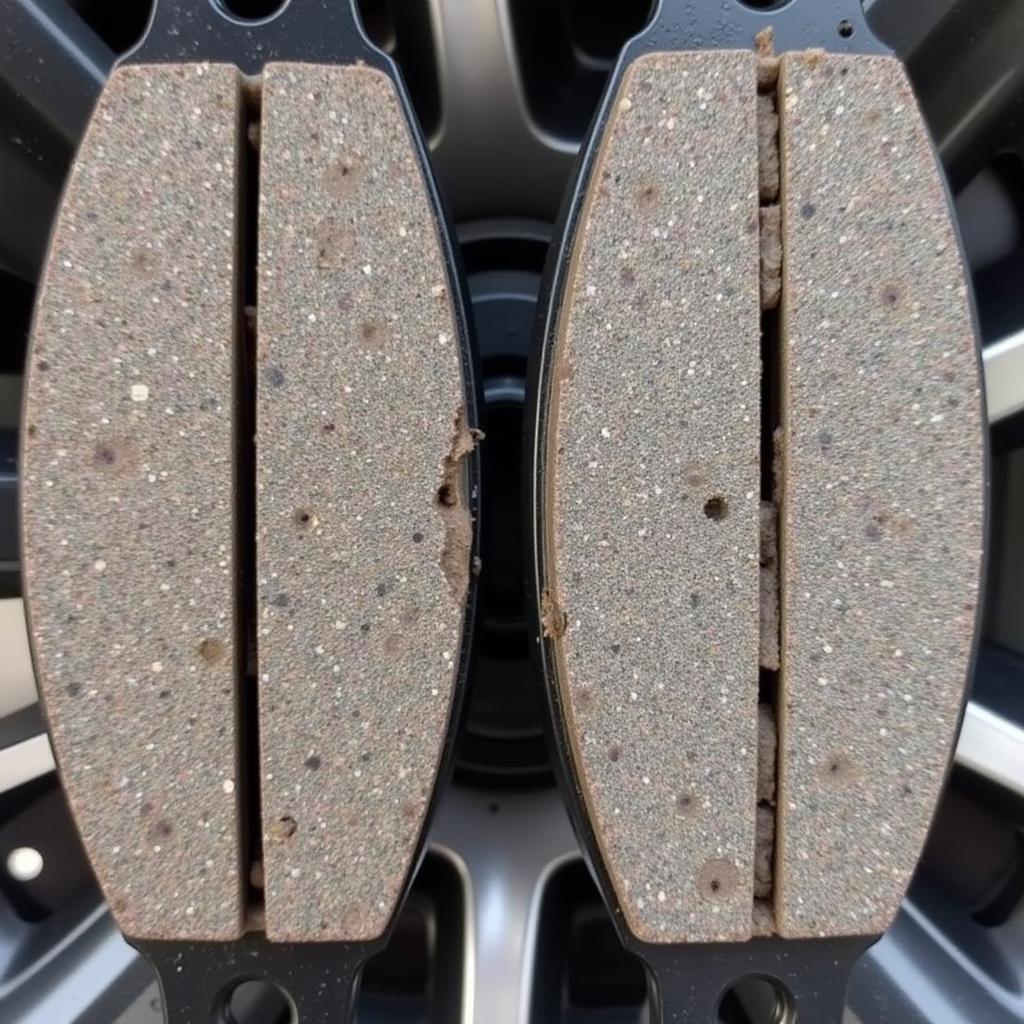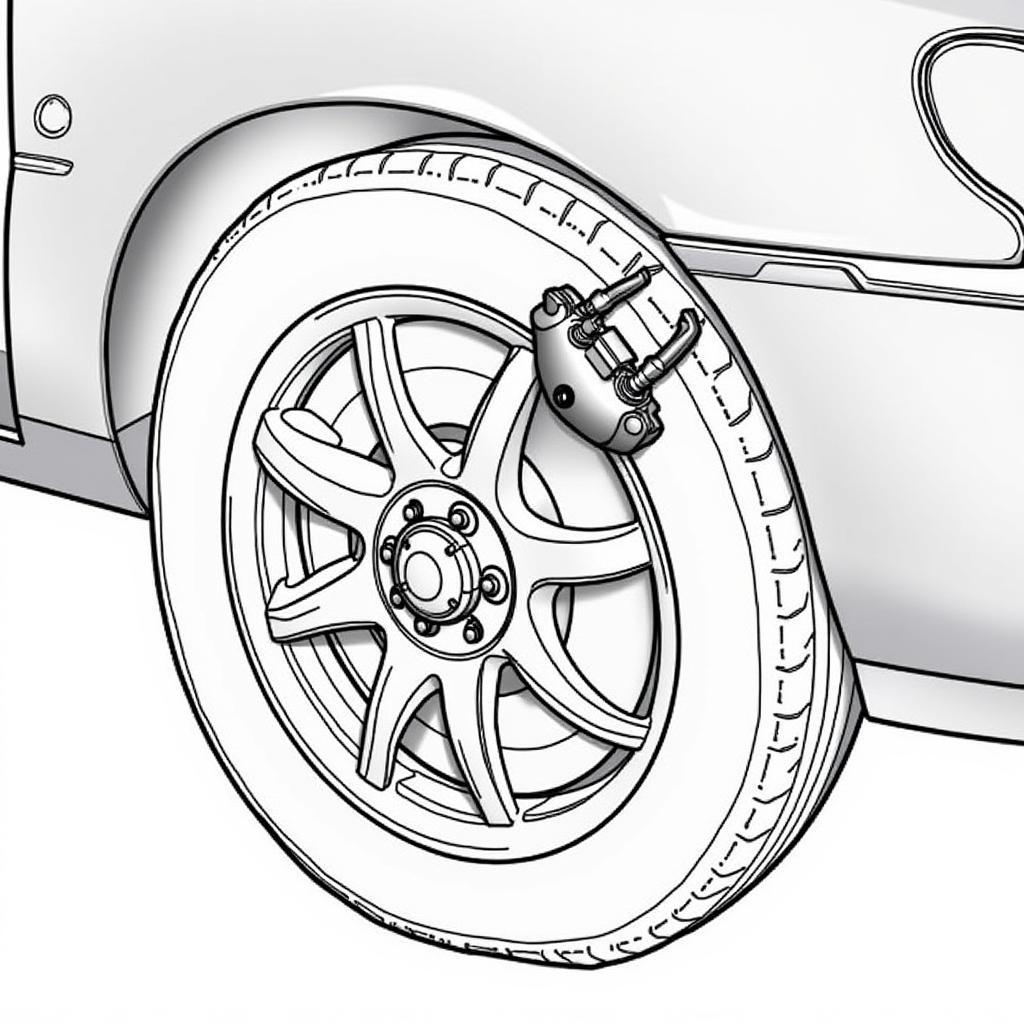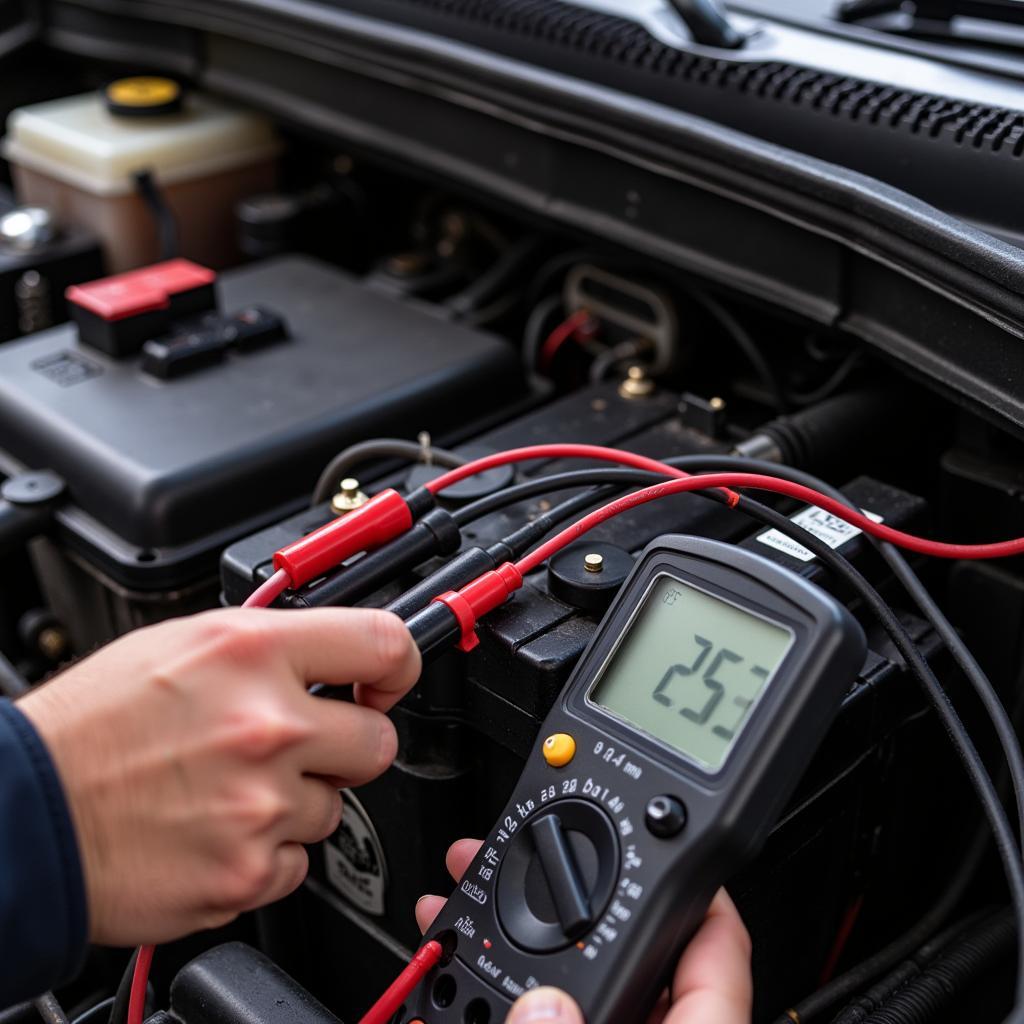The brake warning light on your Buick Lacrosse is a crucial safety feature that illuminates when the car’s system detects a problem within the braking system. While it can be alarming to see this light, understanding the common causes and how to troubleshoot them can save you time, money, and potential danger on the road.
Understanding Your Buick Lacrosse Brake Warning Light
The brake warning light, often a red circle with an exclamation mark or the word “BRAKE,” serves as an immediate alert to potential braking issues. When this light turns on, it doesn’t always mean a complete brake failure is imminent. However, it’s critical to address the issue promptly to prevent further damage and ensure your safety.
Common Causes of a Brake Warning Light
Several factors can trigger the brake warning light in your Buick Lacrosse. Here are some of the most common culprits:
1. Low Brake Fluid Level
One of the most frequent causes is low brake fluid. Your braking system relies on hydraulic pressure created by the brake fluid to function correctly. If the fluid level drops below a certain point, it can trigger the warning light.
Possible reasons for low brake fluid:
- Brake fluid leak: A leak in the brake lines, calipers, or wheel cylinders can lead to fluid loss.
- Worn brake pads: As brake pads wear down, the brake calipers need to extend further to engage the rotors, requiring more brake fluid.
Troubleshooting low brake fluid:
- Check the brake fluid reservoir: Locate the reservoir (usually a translucent container with a “brake fluid” label) and check the fluid level. It should be between the “Min” and “Max” markings.
- Add brake fluid if necessary: If the level is low, carefully add the correct type of brake fluid recommended for your Buick Lacrosse.
- Inspect for leaks: Look for signs of leaks around the brake lines, calipers, and wheel cylinders. If you suspect a leak, it’s crucial to have a professional mechanic diagnose and repair it immediately.
 Checking Buick Lacrosse Brake Fluid Reservoir
Checking Buick Lacrosse Brake Fluid Reservoir
2. Worn Brake Pads
Brake pads are designed to wear down over time. When they reach a certain thickness, a wear indicator, usually a small metal tab, makes contact with the rotor, creating a squealing sound and triggering the brake warning light.
Troubleshooting worn brake pads:
- Listen for squealing or grinding noises: Worn brake pads often produce a high-pitched squeal when the brakes are applied.
- Inspect the brake pads visually: If you have experience working with brakes, you can remove the wheel and visually inspect the brake pads’ thickness. If they are close to or below the recommended minimum thickness, it’s time for a replacement.
- Consult a mechanic: If you’re unsure about the condition of your brake pads, it’s best to have a professional mechanic inspect them.
 Worn Brake Pads on a Buick Lacrosse
Worn Brake Pads on a Buick Lacrosse
3. Faulty Brake Light Switch
The brake light switch is a small sensor activated when you press the brake pedal. It signals the brake lights to illuminate and plays a role in activating the brake warning light. A faulty brake light switch might not send the correct signal, leading to the warning light appearing even if the brake system is functioning correctly.
Troubleshooting a faulty brake light switch:
- Check the brake lights: Have someone press the brake pedal while you observe if the brake lights illuminate. If they don’t light up or flicker, it could indicate a brake light switch issue.
- Consult a mechanic: Diagnosing and replacing a brake light switch requires some technical expertise. It’s best to seek assistance from a qualified mechanic.
4. ABS System Malfunction
The Anti-lock Braking System (ABS) in your Buick Lacrosse is designed to prevent wheel lockup during hard braking, enhancing vehicle control. A malfunction within the ABS system, such as a faulty sensor or control module, can trigger the brake warning light.
Troubleshooting an ABS malfunction:
- Look for additional warning lights: An ABS malfunction might be accompanied by an illuminated ABS warning light on the dashboard.
- Avoid driving: If you suspect an ABS issue, it’s best to avoid driving and have the vehicle towed to a mechanic.
- Seek professional diagnosis: Diagnosing and repairing an ABS system requires specialized equipment and expertise. It’s crucial to consult a qualified mechanic for a thorough diagnosis and repair.
 Close-up of a Buick Lacrosse ABS Sensor
Close-up of a Buick Lacrosse ABS Sensor
Conclusion
Ignoring a brake warning light on your Buick Lacrosse is never advisable. Promptly addressing the issue ensures your safety and prevents potentially costly repairs down the line. While some causes, like low brake fluid, might be simple to address, others require professional diagnosis and repair. Remember, when it comes to brakes, erring on the side of caution is always the best approach. Consult a qualified mechanic at the first sign of trouble to keep your Buick Lacrosse running smoothly and safely.
Frequently Asked Questions (FAQ)
1. Can I drive my Buick Lacrosse with the brake warning light on?
It’s not recommended to drive with the brake warning light on. The light indicates a potential issue with your braking system, which could compromise your safety.
2. How much does it cost to fix a brake warning light on a Buick Lacrosse?
The repair cost varies depending on the underlying cause. A simple brake fluid top-off might cost a few dollars, while a brake pad replacement can range from $150 to $300 per axle. More complex repairs like ABS system issues can be more expensive.
3. How often should I check my brake fluid level?
It’s good practice to check your brake fluid level at least once a month. Regularly checking helps you identify potential leaks and ensures the fluid level is within the recommended range.
4. Do I need to replace all four brake pads at the same time?
It’s generally recommended to replace brake pads in pairs (both front or both rear). However, if all four pads are nearing the end of their lifespan, replacing them all simultaneously is a good preventative measure.
5. Can I add any brake fluid to my Buick Lacrosse?
No, it’s crucial to use the correct type of brake fluid specified in your owner’s manual. Using the wrong type can damage the braking system and compromise its effectiveness.

